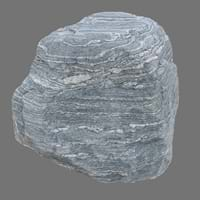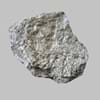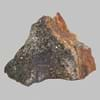Definition
Migmatite is typically a granitic rock within a metamorphic host rock which is composed of two intermingled but distinguishable components
Slate is a fine-grained, foliated, homogeneous metamorphic rock derived from an original shale-type sedimentary rock composed of clay or volcanic ash through low-grade regional metamorphism
Origin
Southern Alps, France
England
Discoverer
Jakob Sederholm
Unknown
Etymology
From the Greek word migma which means a mixture
From Old French esclate, from esclat (French éclat)
Class
Metamorphic Rocks
Metamorphic Rocks
Sub-Class
Durable Rock, Medium Hardness Rock
Durable Rock, Medium Hardness Rock
Group
Not Applicable
Not Applicable
Other Categories
Coarse Grained Rock, Fine Grained Rock, Medium Grained Rock, Opaque Rock
Fine Grained Rock, Opaque Rock
Texture
Foliated
Foliated
Color
Black, Bluish - Grey, Brown, Brown- Black, Dark Greenish - Grey, Dark Grey to Black
Black, Brown, Buff, Green, Light to Dark Grey, Purple, Red, Shades of Blue
Durability
Durable
Durable
Scratch Resistant
Yes
Yes
Appearance
Dull, Banded and Foilated
Dull
Interior Uses
Countertops, Flooring, Kitchens
Bathrooms, Decorative Aggregates, Entryways, Floor Tiles, Flooring, Homes, Hotels, Interior Decoration, Kitchens, Stair Treads
Exterior Uses
As Building Stone, As Facing Stone
As Building Stone, As Facing Stone, Garden Decoration, Paving Stone
Other Architectural Uses
Curbing
Curbing
Construction Industry
As Dimension Stone, Cement Manufacture, for Road Aggregate, Making natural cement
As Dimension Stone
Medical Industry
Not Yet Used
Not Yet Used
Antiquity Uses
Artifacts
Artifacts, Monuments, Sculpture, Small Figurines
Commercial Uses
Cemetery Markers, Jewelry, Tombstones, Used to manufracture paperweights and bookends
Blackboards, Commemorative Tablets, Laboratory bench tops, Standard material for the bed of Billiard table, Standard material for the beds of Pool and Snooker table, Tombstones, Used in aquariums, Writing Slates
Types
Diatexites and Metatexites
Not Available
Features
Generally rough to touch, Is one of the oldest rock
Easily splits into thin plates, Surfaces are often shiny, Very fine grained rock
Archaeological Significance
Monuments
Not Yet Used
Used
Famous Monuments
Not Applicable
Data Not Available
Sculpture
Not Yet Used
Used
Famous Sculptures
Not Applicable
Data Not Available
Figurines
Not Yet Used
Used
Formation
Migmatites form by high temperature regional and thermal metamorphism of protolith rocks where rocks melt partially due to high temperature.
Slate is a low grade metamorphic rock that is generally formed by metamorphosis of mudstone or shale, under relatively low pressure and temperature conditions.
Mineral Content
Biotite, Chlorite, Feldspar, Garnet, Graphite, Hornblade, Micas, Muscovite or Illite, Quartz, Quartzite, Silica, Zircon
Apatite, Biotite, Chlorite, Feldspar, Graphite, Hematite, Kaolinite, Magnetite, Pyrite, Tourmaline, Zircon
Compound Content
Aluminium Oxide, NaCl, CaO, Carbon Dioxide, Iron(III) Oxide, FeO, Potassium Oxide, Magnesium Carbonate, MgO, MnO, Phosphorus Pentoxide, Silicon Dioxide, Titanium Dioxide
Aluminium Oxide, CaO, Iron(III) Oxide, Potassium Oxide, MgO, Sodium Oxide, Silicon Dioxide, Titanium Dioxide
Types of Metamorphism
Burial Metamorphism, Cataclastic Metamorphism, Regional Metamorphism
Burial Metamorphism, Cataclastic Metamorphism, Regional Metamorphism
Types of Weathering
Biological Weathering, Chemical Weathering, Mechanical Weathering
Biological Weathering, Chemical Weathering, Mechanical Weathering
Types of Erosion
Chemical Erosion, Glacier Erosion, Water Erosion, Wind Erosion
Coastal Erosion, Glacier Erosion, Water Erosion, Wind Erosion
Grain Size
Medium to Fine Coarse Grained
Very fine-grained
Fracture
Irregular
Splintery
Streak
White
Light to dark brown
Porosity
Very Less Porous
Less Porous
Luster
Dull to Pearly to Subvitreous
Dull
Compressive Strength
Not Available
Specific Gravity
2.65-2.75
2.65-2.8
Transparency
Opaque
Opaque
Density
Not Available
2.6-2.8 g/cm3
Specific Heat Capacity
Not Available
Resistance
Heat Resistant, Pressure Resistant
Heat Resistant, Impact Resistant, Pressure Resistant, Wear Resistant
Deposits in Eastern Continents
Asia
China, India, Iran, Iraq, Kazakhstan, Kyrgyzstan, Mongolia, Russia
China, India, Turkey
Africa
Cameroon, Ethiopia, Ghana, Kenya, Madagascar, Morocco, Mozambique, Namibia, Nigeria, Tanzania, Togo
Not Yet Found
Europe
Albania, Austria, Bosnia and Herzegovina, Finland, France, Georgia, Germany, Hungary, Italy, Kosovo, Monaco, Norway, Poland, Romania, Serbia, Slovakia, Slovenia, Sweden, Switzerland, Ukraine, United Kingdom
Belgium, France, Germany, Italy, Norway, Portugal, Spain, United Kingdom
Others
Not Yet Found
Arctic
Deposits in Western Continents
North America
Canada, Costa Rica, Cuba, Mexico, Panama, USA
USA
South America
Argentina, Bolivia, Brazil, Chile, Colombia, Ecuador, Peru, Venezuela
Brazil
Deposits in Oceania Continent
Australia
New South Wales, New Zealand, Queensland, Victoria
Not Yet Found
All about Migmatite and Slate Properties
Know all about Migmatite and Slate properties here. All properties of rocks are important as they define the type of rock and its application. Migmatite and Slate belong to Metamorphic Rocks.Texture of Migmatite is Foliated whereas that of Slate is Foliated. Migmatite appears Dull, Banded and Foilated and Slate appears Dull. The luster of Migmatite is dull to pearly to subvitreous while that of Slate is dull. Migmatite is available in black, bluish - grey, brown, brown- black, dark greenish - grey, dark grey to black colors whereas Slate is available in black, brown, buff, green, light to dark grey, purple, red, shades of blue colors. The commercial uses of Migmatite are cemetery markers, jewelry, tombstones, used to manufracture paperweights and bookends and that of Slate are blackboards, commemorative tablets, laboratory bench tops, standard material for the bed of billiard table, standard material for the beds of pool and snooker table, tombstones, used in aquariums, writing slates.









